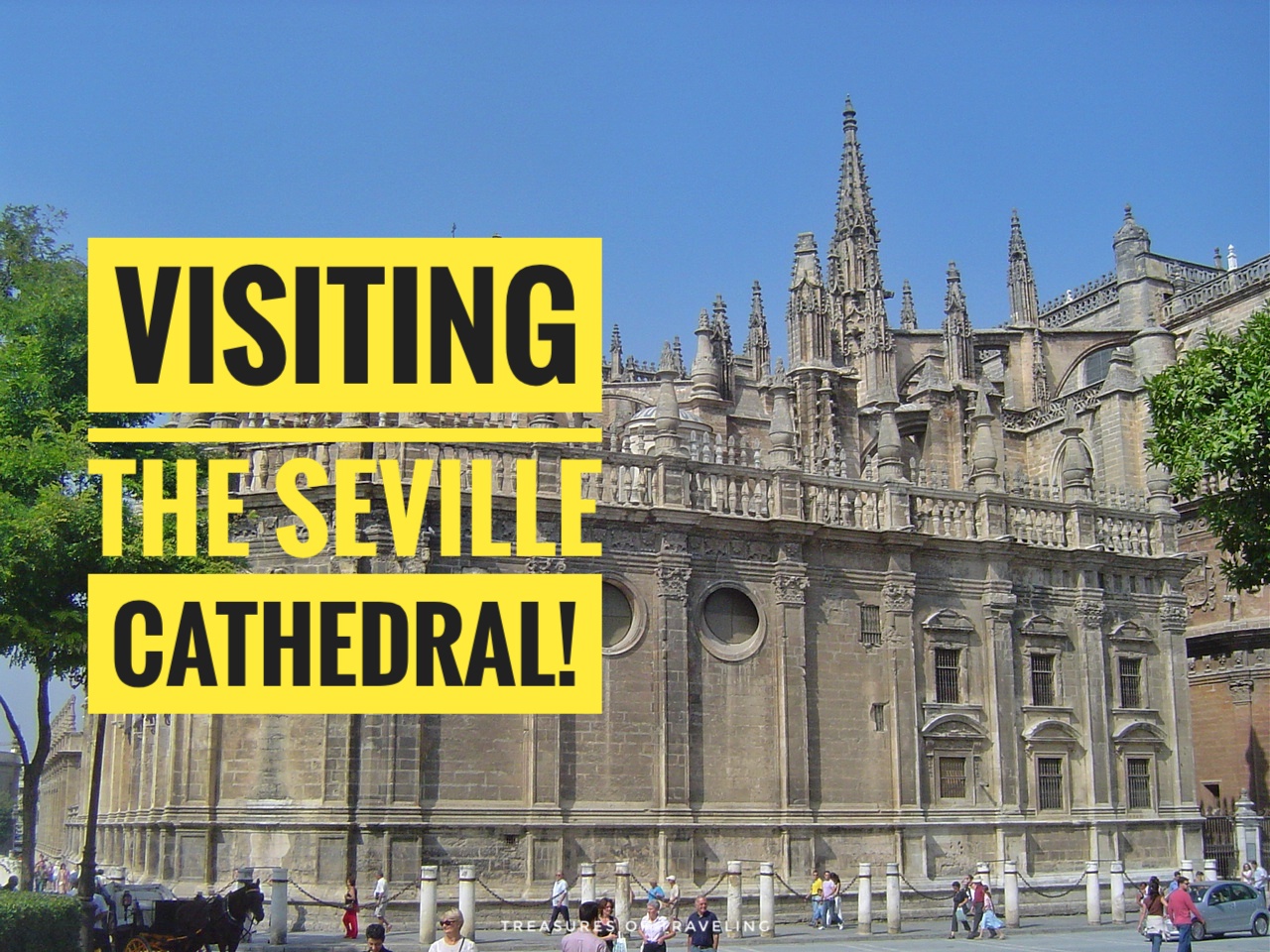
While traveling throughout southern Spain in the Andalusia region, you will not want to miss Seville (or Sevilla in Spanish). The city is actually the capital of the Andalusia region and is full of Spanish culture and Treasures of Traveling such as the Cathedral of Saint Mary of the See, better known as Seville Cathedral.
Seville Cathedral is Largest Cathedral in the World
It is considered the third largest church in the world and since it is also the seat of a bishop, it’s actually the largest cathedral in the world. It has a fascinating history because originally it was a mosque that was converted into a church, as was so common in the southern part of Spain during the reconquest by the Spanish Monarchs.

Conversion from Mosque to Cathedral
It was originally known as the Almohad Mosque between 1172 and 1248, then it transitioned to a Christianized mosque during the reconquest until it was decided to build a new Gothic cathedral over the existing parts of the old mosque. The expansion and the actual construction of the Cathedral, as we know it today, was started in 1401 and completed around 1506. The Cathedral now has a total of 80 chapels, helping to explain its iconic title of largest cathedral in the world.

Highlights within the Seville Cathedral
Many years later in 1987 it was named as a UNESCO World Heritage Site. It is stunning to look at from the outside, but you must enter the cathedral to actually get a feel for just how large it actually is. Once inside, one of the highlights is the tomb of Christopher Columbus, who is buried here after discovering the new world. A second highlight is Pierre Dancart’s masterpiece, considered one of the finest altarpieces in the world.


Giralda Bell Tower

After exploring the inside of the Seville Cathedral, it’s time to climb the Giralda Bell Tower to see the stunning views of downtown Sevilla. The 343 feet bell tower was originally a minaret of the Almohad Mosque and used for the call to prayer when the Moors ruled Seville. It is probably one of the most famous symbols of Seville because it can be seen from so many parts of the city. Due to its height, this bell tower stands out and is really hard to miss so it makes for a great meeting point if you get lost. Your entrance ticket to the cathedral will also grant you access to the top of the tower.

If you have time to explore the tower, make sure to exercise those legs of yours and make your way to the top. The reason I didn’t say climb is because the minaret doesn’t have any stairs. Instead, there are 34 ramps that lead the way around the outer edge of the tower all the way to the top. It was designed with a ramp instead of stairs so the donkey carrying the man assigned to lead the call to prayer, known as the Muezzin, wouldn’t have to walk to the top. Even though there are no steps, it is a climb to the top of the tower to take in the views so make sure to wear some comfy shoes. From the top of the tower, you can see many of Seville’s most interesting attractions, including the Royal Alcázar of Seville, Plaza de España and the Plaza de Toros de la Real Maestranza de Caballería de Sevilla.


The Seville Cathedral is definitely a sight to behold and not to be missed so make sure you add it to your list of things to see as it is one of the treasures of traveling in Seville.
Check out the map below to see where the Seville Cathedral is located at!
Pin me!
Like this article? Then Pin me so other travelers can find it!


